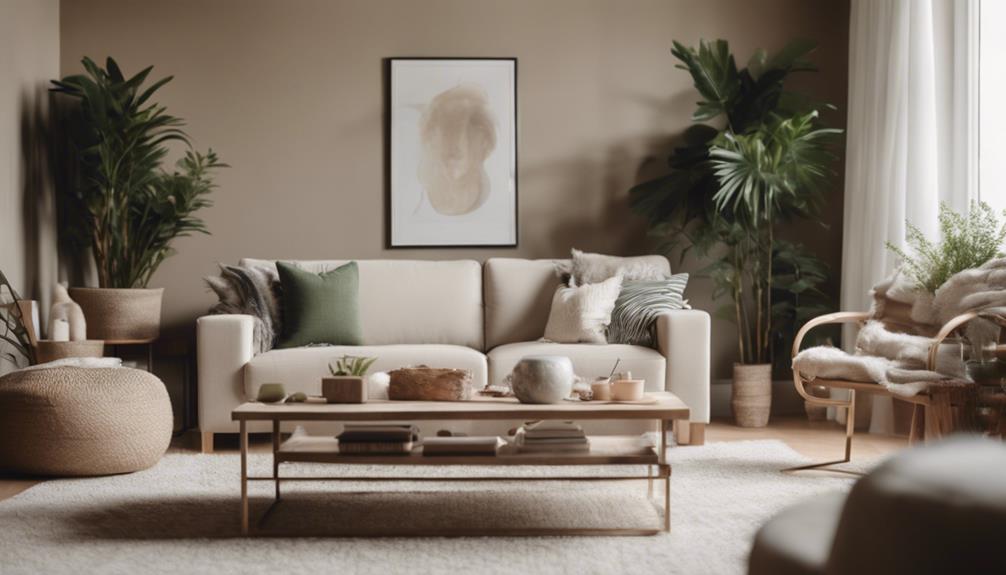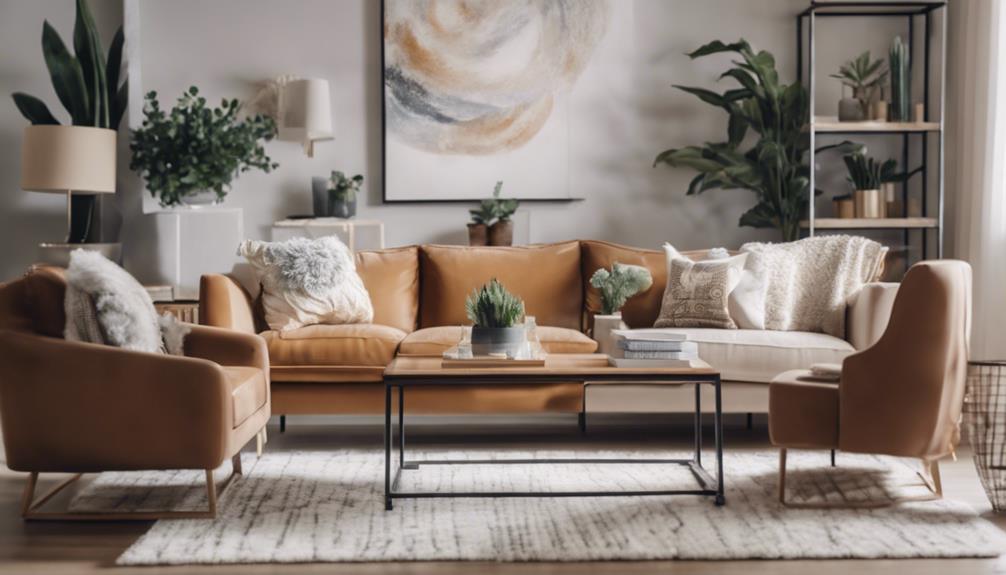In order to achieve a cohesive home decor, it is important to ensure consistent paint colors in connecting areas. Select a harmonious palette to create flow and limit options to colors within the same temperature family. Add pops of bold colors strategically. Seek expert guidance to validate your choices, utilize color theory, and follow the 60-30-10 formula. Customize color choices for each room by using flow-through paint and sticking to similar color groups. Understanding color theory is key to creating balanced and diverse atmospheres. Use primary colors as the base, incorporate shades for depth, and add complementary accents for continuity. Achieving harmony in your home involves a combination of color, design elements, materials, and personal style.
Key Takeaways
- Use consistent paint colors in connecting spaces for seamless flow.
- Select a harmonious color palette for cohesion.
- Consider sightlines for complementing colors.
- Limit color choices to the same temperature family.
- Introduce pops of bold colors strategically for impact.
Creating Cohesive Color Flow
To establish a cohesive color flow in your home decor, begin by using a consistent paint color in connecting spaces. Selecting a harmonious color palette that flows seamlessly from room to room will help maintain a unified look throughout the home.
Consider the sightlines in your living spaces to make sure that the colors complement each other and create a sense of continuity. Limiting your color choices to the same temperature family can further enhance the shift between different areas, promoting a unified atmosphere.
Accessories play an essential role in introducing pops of bold colors in enclosed rooms without disrupting the overall color cohesion. By following the 60-30-10 color formula – where 60% of the room is a dominant color, 30% a secondary color, and 10% an accent color – you can achieve a well-balanced and aesthetically pleasing color scheme throughout your home.
Expert Tips for Color Flow
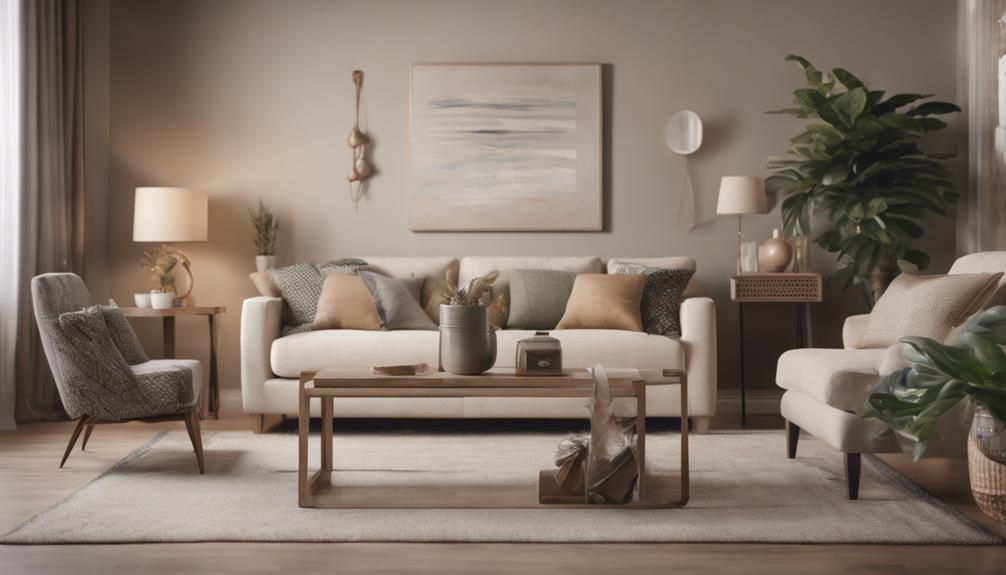
Consider hiring a designer for expert color guidance and consultations to validate your color choices effectively. Designers can offer insights into using analogous colors for a calm ambiance or complementary colors for a more energetic feel throughout your home. Following the 60-30-10 color formula can help you balance primary, secondary, and accent colors in a way that enhances cohesion.
It's essential to pay attention to sightlines and color groups to maintain consistency in color flow from room to room. By understanding color theory, designers can help you grasp the relationships between colors, enabling you to create a harmonious and cohesive design. With their expertise, you can confidently select colors that work well together and create a unified look throughout your home.
Trusting in the guidance of a professional can make the process of choosing colors easier and more successful in achieving a cohesive and inviting atmosphere.
Room-Specific Color Tips
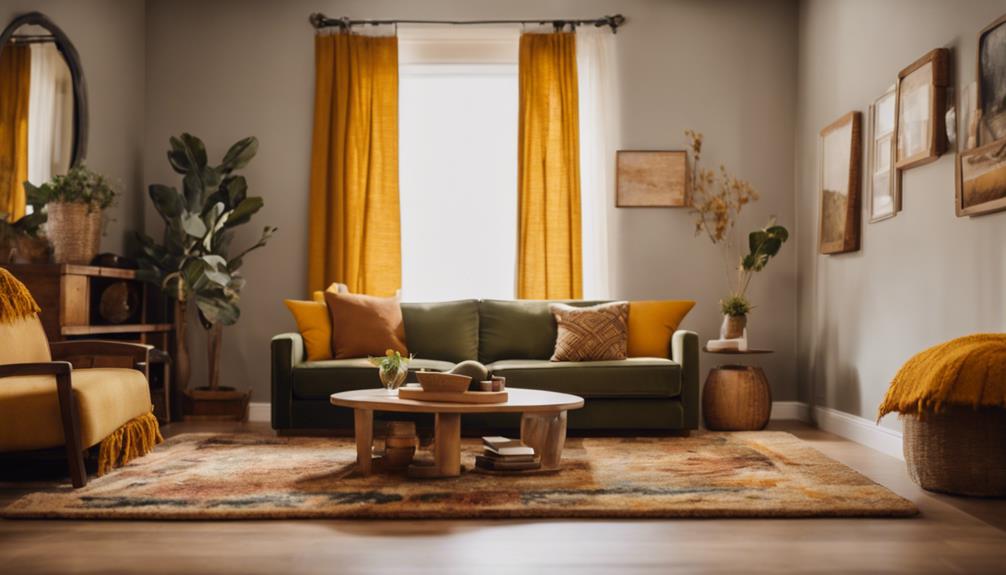
For maintaining color consistency in your home, utilizing flow-through paint in open floor plans can be a practical solution. This approach ensures a seamless transition between spaces, creating a cohesive look throughout. When choosing colors, consider selecting from a specific color group to maintain consistency in different rooms. For instance, if your chosen color is blue, varying shades of blue can be used in different areas to tie them together. To prevent overwhelming visual impact, it's advisable to reserve bold colors for enclosed rooms where they can make a statement without clashing with the overall color palette.
| Room Specific Color Tips |
|---|
| Tip 1: Utilize flow-through paint in open floor plans. |
| Tip 2: Choose colors from the same group for consistency. |
| Tip 3: Reserve bold colors for enclosed spaces. |
| Tip 4: Pay attention to sightlines for seamless coordination. |
| Tip 5: Use accent colors strategically to tie different spaces together. |
Color Theory and Implementation

Explore the world of color theory to elevate your home decor game effortlessly.
Understand the significance of the color wheel in creating harmonious color schemes.
Learn how to implement different color relationships for diverse atmospheres in your living spaces.
Color Scheme Selection
Understanding color theory is pivotal for selecting cohesive color schemes that create a harmonious and visually appealing home decor. Interior designers play a vital role in guiding individuals on color scheme selection by leveraging relationships between colors on the color wheel. By incorporating concepts like analogous colors for a calming ambiance and complementary colors for vibrant spaces, designers help create a cohesive and balanced color palette throughout the home.
Designers often recommend implementing a primary color for each room and then adding complementary accents to enhance the overall color scheme. This strategy guarantees a cohesive look while allowing for some creative flair. Additionally, balancing warm and cool tones, using lighting effectively, and coordinating furniture colors are key elements that contribute to a seamless color flow in your living spaces.
Implementation Techniques
To effectively implement color theory in your home decor, begin by applying the 60-30-10 color formula for a balanced color scheme. This formula suggests using 60% of a dominant color, 30% of a secondary color, and 10% of an accent color to create a harmonious look that works together seamlessly.
Consider using analogous colors, which are next to each other on the color wheel, for a calm and cohesive feel throughout your space. For added energy and vibrancy, incorporate complementary colors that are opposite each other on the color wheel. Consulting the color wheel will help you understand how different colors interact and create harmony in your design.
Ultimately, strategically incorporate accent colors to tie different rooms together and maintain color continuity, ensuring your home decor appears cohesive and visually appealing. By following these implementation techniques rooted in color theory, you can achieve a harmonious and unified look throughout your home.
Color Palette Selection
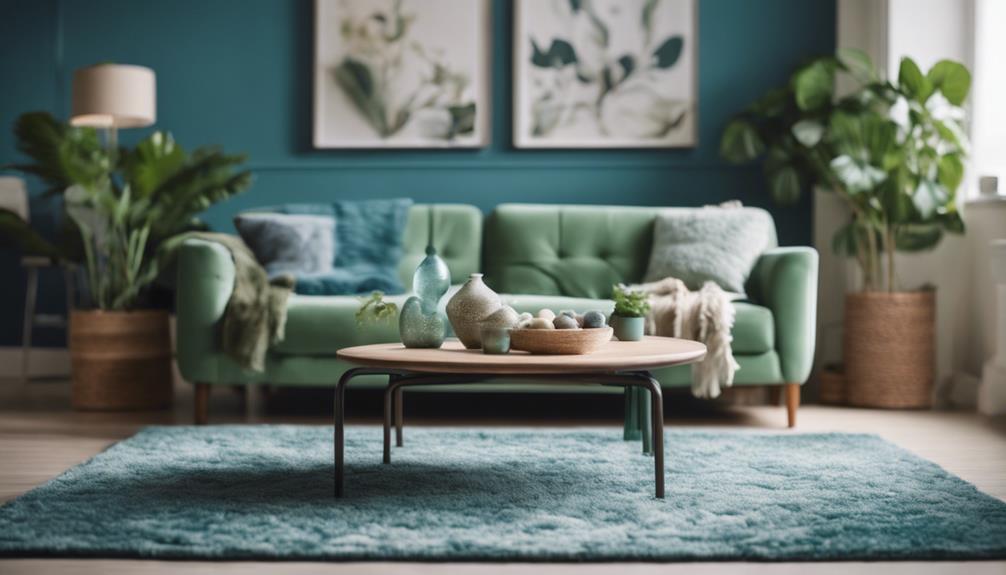
When choosing a color scheme for your home, concentrate on selecting primary colors that will act as the base of each room.
By integrating different shades of the primary color, you can add dimension and visual appeal to your space.
Don't forget to include complementary accent hues to enhance the overall appearance and guarantee a smooth flow between rooms.
Primary Color Choices
Select a main color for each room to establish a cohesive color scheme that ties your home's design elements together. By choosing a common thread to connect the spaces, you create a harmonious flow that enhances the overall look of your home.
Opt for varying shades of the main color to add depth and interest while maintaining a sense of unity. Incorporating complementary accent hues strategically can further elevate the main color choices and promote a cohesive appearance.
Balancing bold and neutral tones throughout different rooms ensures a smooth connection between spaces. By distributing colors evenly and thoughtfully throughout your home, you can create a cohesive look that ties everything together.
Complementary Accent Hues
Enhance your home's color palette by incorporating complementary accent hues strategically throughout your decor. Choosing the right accent colors can add depth and interest to your space, creating a sense of harmony and cohesion.
Opt for hues that enhance your primary color scheme without overshadowing it, ensuring a balanced look and feel.
To achieve a cohesive design, select accent hues that complement the overall color story of your home. These accents can be introduced through decor items, textiles, and artwork, strategically placed to create visual impact and tie different spaces together.
Seamless Room Transitions
To smoothly connect your living spaces through color, maintaining a consistent primary color and limiting hues to the same temperature family is key. When aiming for smooth room shifts, sticking to a cohesive color palette that revolves around a primary color can create a sense of flow and harmony throughout your home.
By ensuring that the colors in adjoining rooms complement each other and belong to the same temperature family, you can achieve a smooth shift from one space to another. Strategic placement of accent colors can further enhance the cohesiveness of your color scheme, providing continuity and visual interest.
Following a color formula like the 60-30-10 rule can help you maintain a balanced palette while adding variety. If you find it challenging to select colors that flow well between rooms, consider utilizing color-planning tools to guide you in choosing a harmonious color scheme that ties your living spaces together smoothly.
Creating Cohesive Interiors
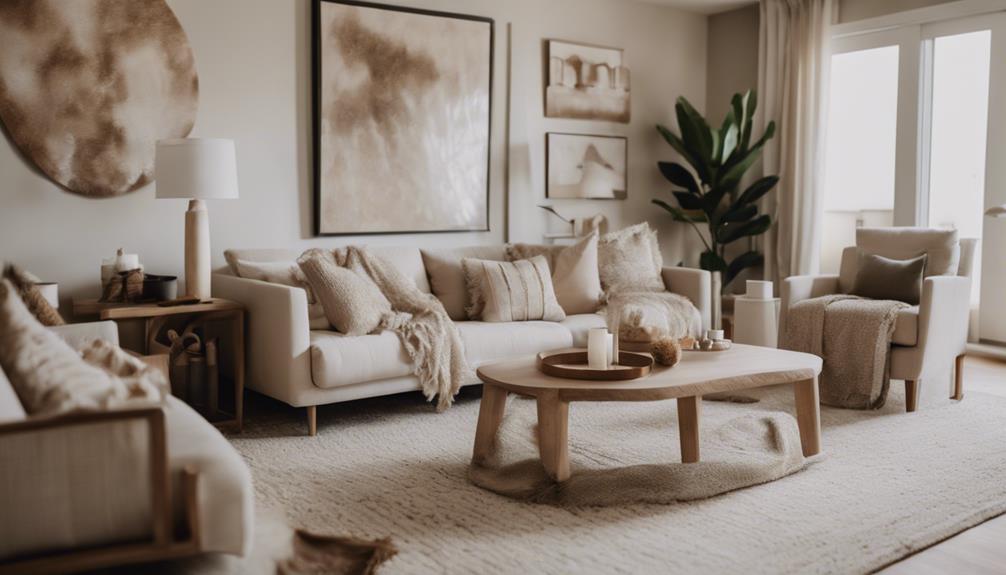
Integrating a common theme or element throughout your home enhances cohesion and ties different spaces together seamlessly.
To create cohesive interiors throughout your home, pay attention to the following key points:
- Consistent Color Palette: Use the same colors or complementary hues in different rooms for a harmonious flow.
- Design Elements: Incorporate similar design elements like patterns or shapes to maintain a cohesive look.
- Balanced Materials: Mix and match materials, textures, and patterns thoughtfully to avoid overwhelming the space.
- Furniture Placement: Create a unifying design vision by strategically placing furniture to define zones and maintain flow.
- Personal Style: Trust your instincts and stay true to your personal style preferences to achieve a curated and cohesive home decor that reflects your individuality.
Unifying Design Vision
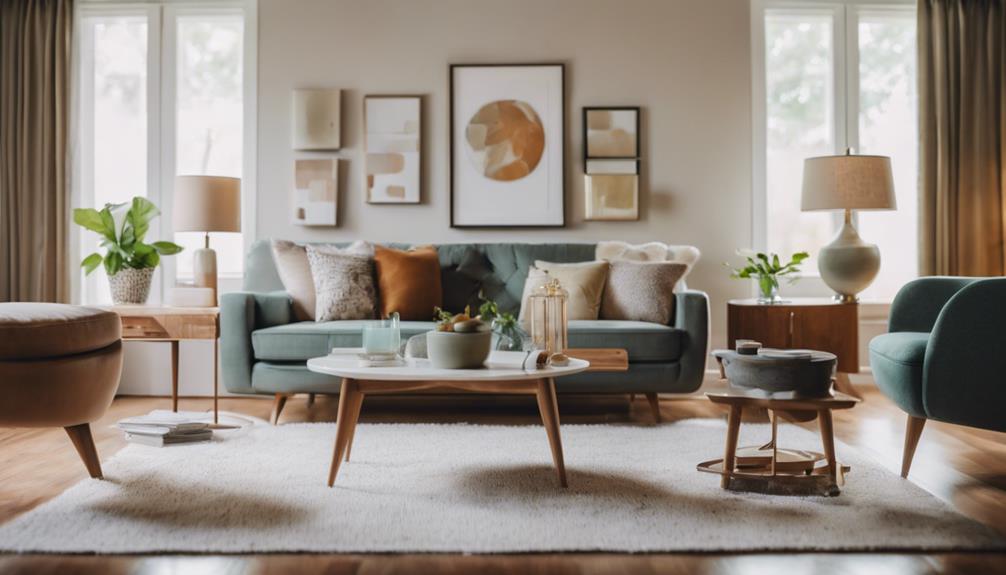
Establish a cohesive design vision by creating a core color story to tie together your home decor elements. Select a palette that resonates with you and reflects the ambiance you desire in your living space. By incorporating this color scheme throughout your home, you'll create a unified look that makes every room feel cohesive and connected.
Utilize thoughtful furniture placement and zoning to maintain a clutter-free look and guarantee that your design vision flows smoothly from one area to the next. By strategically positioning furniture and defining different zones within your home, you can achieve a harmonious and balanced aesthetic that ties everything together seamlessly.
Continual editing and rotating of pieces are essential in preserving a curated aesthetic and unifying design vision. Regularly reassess your decor choices to guarantee they align with your overall vision and contribute to the cohesive feel of your home.
Trusting Personal Instincts
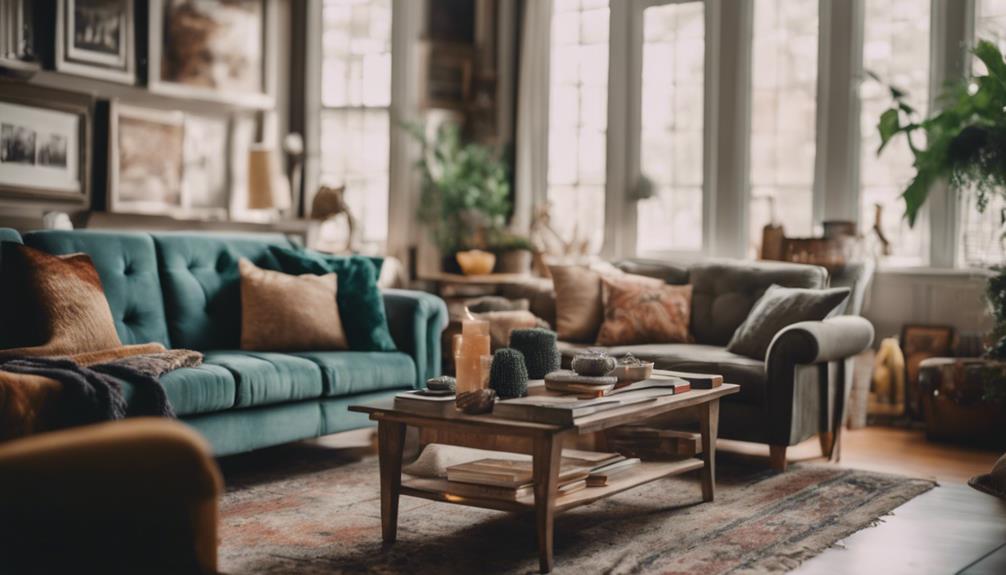
Trust your personal instincts when making design choices; it allows for an authentic expression in your home decor. Here's how to trust your personal instincts for cohesive styling and authentic expression:
- Shop Instinctively: Buy what you genuinely love to create a personalized space.
- Mix Eras and Regions: Pieces from different times and places can harmonize based on your taste.
- Encourage Trust: Trust your eye for cohesive styling to achieve a unique design.
- Intuitive Shopping: Let your instincts guide you to find pieces that contribute to a well-curated space.
- Personalized Touch: Embrace your unique style preferences to create a cohesive and harmonious home design.
Trusting your personal instincts is key to creating a space that truly reflects your personality and style. By following your intuition and staying true to your tastes, you can achieve a home decor that's authentically you.
Seeking Inspiration From Experts
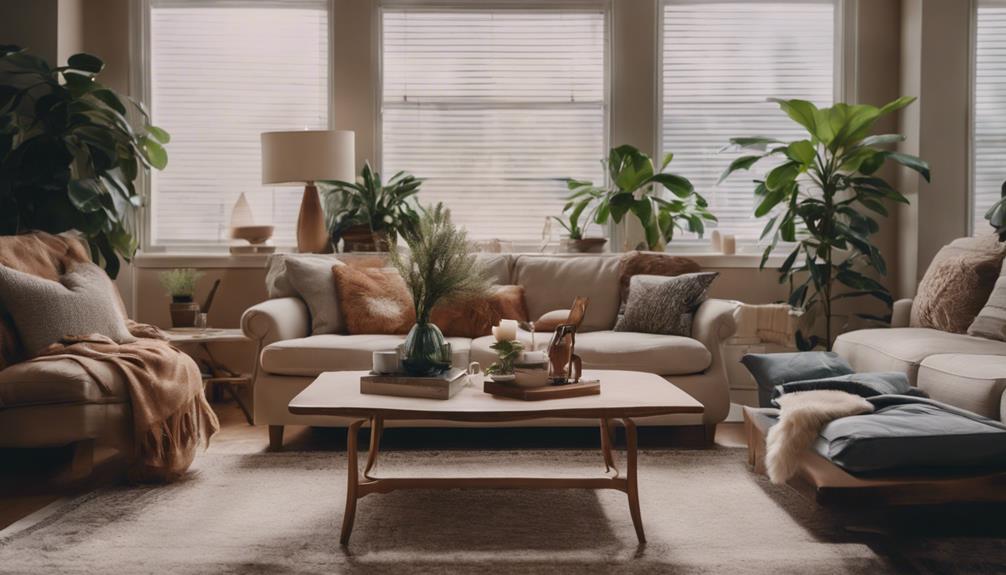
Design experts provide valuable insights on blending diverse styles and creating intentional and cohesive interiors. When seeking inspiration from experts, you gain access to tips to create spaces where different elements work well together. These professionals emphasize that the key to making your home decor cohesive is by learning how to balance a mix of furniture and decor items effectively.
By following the guidance of experts, you can create interesting and personalized spaces while ensuring that everything ties together harmoniously.
Experts encourage embracing individuality and unique design preferences, as these elements can add character and depth to your home decor. Trusting your personal instincts and taste in design choices is also highlighted as an essential factor in achieving a cohesive look throughout your living spaces.
Design Elements for Balance
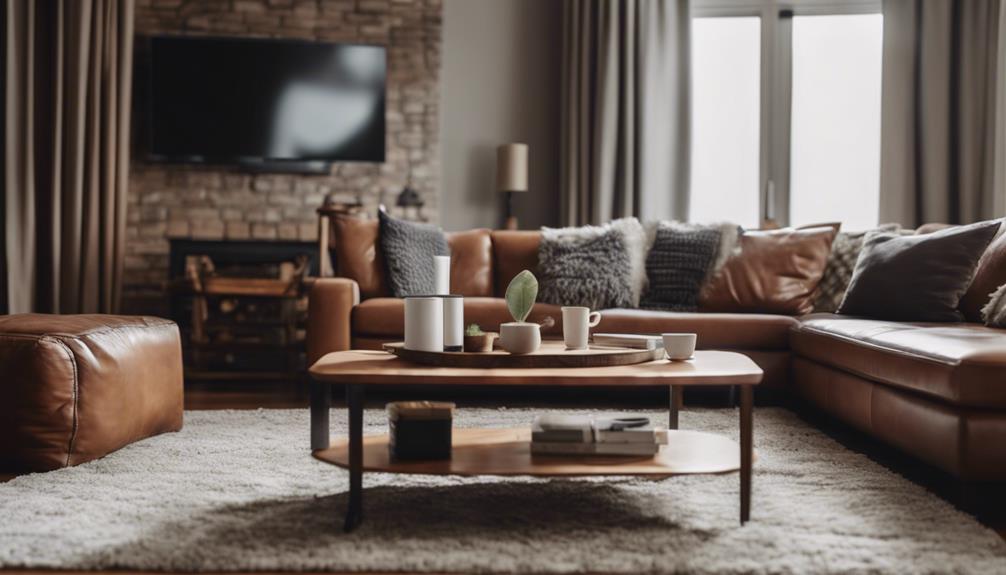
To achieve a balanced and cohesive home decor, focus on incorporating key design elements that promote visual harmony and equilibrium within your living spaces. This can be achieved through the careful selection of colors, textures, and patterns that complement each other. Additionally, pay attention to the arrangement of furniture and decor items to create a sense of balance and flow within the room. By following these principles, you can create a beautiful home decor that feels harmonious and inviting for both you and your guests.
When working towards balance in your home, consider the following elements:
- Distribute visual weight evenly by balancing furniture placement and decor elements.
- Maintain proportion and scale to create a sense of equilibrium in the space.
- Symmetrical design can help in establishing a harmonious look and creating order.
- Embrace negative space to provide visual relief and enhance the overall aesthetic of the room.
- Dynamic contrast, through the use of light and dark hues or different textures, adds visual interest and depth to the design.
Frequently Asked Questions
How to Create a Cohesive Color Flow Throughout Your Home?
To create a cohesive color flow throughout your home, use a consistent paint color in connecting areas, consider sightlines for seamless shifts, limit colors to the same temperature family for harmony, strategically incorporate accent colors, and follow the 60-30-10 color formula for balance.
How to Make Your Home Look More Cohesive?
To make your home look more cohesive, weave a design tapestry with consistent colors like an artist's brush on canvas. Integrate shared elements, blend vintage with modern, and use rugs and furniture placement as your creative stitches.
What Is the 60 30 10 Rule?
The 60 30 10 rule in interior design suggests using 60% of a dominant color, 30% of a secondary color, and 10% of an accent color. It helps achieve visual harmony and cohesion in your decor.
How to Make Your Home Decor Flow?
To make your home decor flow, stick to a consistent color scheme, blend textures and patterns, arrange furniture for balance, introduce a central theme, and strategically use rugs and accessories to tie different areas together seamlessly.
Conclusion
To wrap up, creating a cohesive home decor scheme is like painting a beautiful masterpiece – it requires careful consideration of color, design, and balance.
By following expert tips, trusting your instincts, and seeking inspiration, you can achieve a harmonious space that flows seamlessly throughout your home.
So go ahead, release your inner designer and create a living space that feels like a work of art!
